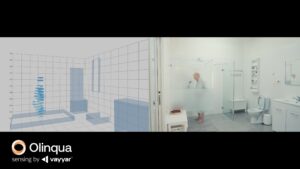A purpose-built integration platform is just one of the many examples of emerging technology that is becoming an indispensable tool for hospitals in Australia and around the globe. From streamlining operations to enhancing patient care, this technology has already proven to be a game-changer.
And while embracing new technology and taking advantage of all of the benefits it can offer plays a key role in moving the healthcare industry forward, it also leaves administrators navigating a complex maze of ever-evolving regulatory requirements set by bodies working tirelessly to keep up.
The regulatory landscape is dynamic, with updates, revisions, and new guidelines increasingly introduced more rapidly to deal with a backlog of technology changes that were previously too complex and novel to address.
For hospitals, like businesses in any industry, failure to stay informed and to adapt can lead to compliance gaps, potential breaches, and even legal consequences.
Adding to the challenge, keeping up requires time and resources in an environment where both of those are often already stretched to the limit. Despite many hospitals having resources dedicated to compliance, as technology advances – as it enables greater access to personal data – the pressure on that team also becomes greater.
Though the need to be informed and to comply will never change, especially in healthcare, the good news is technology itself is becoming smarter and more malleable, and inevitably in the future, it will become adaptable and will contribute to regulating itself to ensure compliance.
While we wait to get to that point, partnering with reputable technology vendors with expert teams that navigate regulation and compliance as a standard part of every day, can empower your own team with additional insight, knowledge, support and confidence.
Regulation: The Usual Suspects
As our hospital system struggles under the weight of increasing demand, new technology is being introduced to solve an endless array of challenges. It is enabling communication, streamlining workflows, monitoring data, and so much more.
And while all of these distinct solutions may have unique functionality that aligns with obscure or less common legislative requirements, there are several regulations and rules that pop up in the majority of cases.
- Privacy and Data Protection
Compliance frameworks, such as the Australian Privacy Principles (APP), provide a set of 13 standards that govern the collection, use and disclosure of personal information, organisational accountability, integrity and the collection of personal information, and the rights of individuals to access their own information.
They are particularly of relevance in healthcare in recent years, with an increased focus on patient privacy and cybersecurity.
These Principles, originally established under the Privacy Act 1988, outline the obligations that organisations must adhere to when handling personal information. And though they were established before some of the newer technology we are using today was even released, they apply in almost any ‘business’ situation where data is being collected and used.
Applying these, or often any rules, in retrospect, especially when it comes to complex technology, can be an impossible task – an activity of unpicking existing systems and implementations, and taking backward steps to try to reach compliance, usually at the detriment to the system(s) or the people who use it.
Ideally, considering privacy laws at the point of technology implementation, and working with a vendor who has them clear and front-of-mind, can save a lot of time, effort and cost down the track. Keeping a finger on the pulse as these laws evolve and beginning work on their integration into existing systems early, can give hospitals more time to develop carefully-considered plans that have minimal impact on operations, and more time to implement those plans.
By embracing compliance frameworks like APP, and not just ticking boxes, by using them as a guideline designed to protect, hospitals can experience several benefits.
Compliance with security measures safeguards patient data against unauthorised access, breaches, and potential cyber threats; compliance with personal information access for patients enables more trusted and transparent relationships with them; and compliance with communication requirements enables a best-practice approach to marketing, and patients who feel less intruded upon.
Stepping outside of national regulations, state-based laws also provide additional protective measures, as do international rules like GDPR.
- Patient and Practitioner Protection
Privacy laws are just the beginning when it comes to protecting patients.
While safeguarding patient records has always been a priority and protected in legislation for many years, it has perhaps become even more important over the last few decades as patient records started to transition from paper to digital.
Both federal and some state-based legislation exists to govern this area, setting out the standards for the management of health information, from collection, to use, disclosure, storage and retention, and access to those records.
As systems and devices in hospitals become even more integrated over coming years – a positive step in the mission towards a ‘complete picture’ of patient circumstances or a single source of truth – careful consideration of how different devices and systems, outside EMRs for instance, but connected to them, access, use and store patient data will be required.
Further to this, consideration will need to be given to the ongoing relevance of the laws themselves – not their mandate to protect patient data, but the measures they define, that currently may not cover integrated technology that will exist and become prominent in the near future.
Finally, laws that govern health practitioners themselves should also be factored into implementation plans for new technology, and monitored. As they set the standards for how practitioners practise, which extends to the tools they use, they could have implications for compliance.
Similar to the above, it will be interesting to see how these laws change to keep up with advances in technology.
- Therapeutic Goods Protection
Legislation that governs therapeutic goods extends from the obvious, like bandages and even blood, through to pacemakers and systems that inform and support diagnosis.
Though, for instance, operational platforms may not fall under the category of therapeutic goods, when integration comes into play, these platforms may be transmitting, interpreting or using data from something that does.
Careful review of the Act, just like the privacy, patient and practitioner laws noted above, will ensure hospitals aren’t unknowingly, or through simple assumption, violating important regulations.
The above is not an exhaustive list, and as noted, less common regulations might apply in some cases for specific technology. Regardless, the fact remains that careful analysis of legislation should be undertaken as part of any digital transformation program, and measures integrated into the plan as early as possible to ensure any new technology is 100% compliant with requirements.
The Human Factor in Compliance
Compliance should not be seen solely as an IT or legal department issue, but as a collective responsibility. Educating and empowering staff to understand the regulatory landscape and the role they play in ensuring compliance will go a long way.
Hospitals, like all organisations, should conduct regular training sessions, create clear policies and procedures, and foster a culture of accountability. Remember, staff are the frontline defenders of compliance, and their knowledge can be make or break.
The Balancing Act: Compliance vs Maximising the Benefits
Although extremely important, compliance shouldn’t become a deterrent from seeking to implement integration software within hospitals or other healthcare settings.
While some hospitals will shy away from the additional cost of compliance associated with new solutions, simply by refraining to update and evolve their technology, ultimately, it all comes down to cost/benefit.
Can the hospital really cope with the level of growing demand, without fully embracing technology that can streamline operations and save valuable time and effort?
Mind the Gap
Sticking with the theme of this article – evolution – gaps are always going to arise because technology solutions and regulations are evolving at different paces.
It may seem like stating the obvious, but a hospital compliance strategy should also evolve over time, as and when needed. Staying up-to-date with the latest regulatory changes is crucial, as is conducting regular audits and risk assessments of the hospital’s technology to identify potential vulnerabilities, address gaps, and implement necessary improvements.
By proactively managing these risks, hospitals not only protect patient data but also minimise the potential impact of regulatory violations or rolling back implementations.



